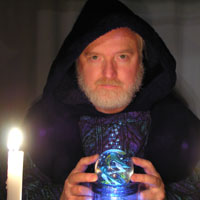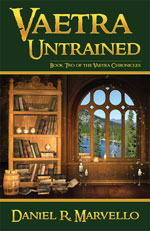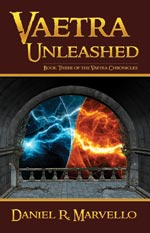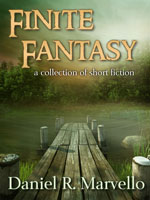This post is part of a series I did to describe how magic works in the Vaetra Chronicles. If you would like to read the other posts as well, check out the Theory of Vaetra category.
[SCROLL LABEL]
Sources and Flows of Vaetra, Volume 2
The Principles of Sorcery
Level: Initiate
Author: Bartrand Longbotul, Professor of Conjuration
[SCROLL CONTENT]
This primer is the second volume in the Sources and Flows of Vaetra series. Before studying the Principles of Sorcery, students should study and understand the information contained in the first volume of this series: Principles of Vaetra.
Human beings and certain other creatures are capable of sensing or manipulating vaetra to varying degrees. In this volume, students learn the principles that govern how humans interact with vaetra.
The Sensitivity Principle
A certain percentage of the human population is able to sense vaetric manifestation. Individuals sense manifestations in a variety of ways and to varying degrees. Generally speaking, humans who can sense manifestation are called Sensitives, and those who cannot are called Insensitives. Approximately ten percent of the human population are Sensitives.
Please note the distinction this primer makes between “vaetric manifestation” and simply “vaetra.” Sensitivity refers to an individual’s ability to sense the conversion of vaetra to a physical manifestation, not the ability to sense the presence or movement of vaetra itself.
An interesting aspect of vaetric sensitivity is the multitude of methods by which individuals experience vaetric manifestation. In general, an individual experiences manifestation through one of his or her “normal” senses, with one exception noted below.
Sensitives generally fall into the following classes:
Sound Sensitives: Some people hear vaetric manifestation. A sound accompanies any manifestation of vaetra, ranging from a high-pitched noise to a low hum. Manifestations that involve multiple affects usually produce multiple tones.
Touch Sensitives: Some people “feel” manifestation. Manifestations are accompanied by a tingling or vibrating sensation.
Sight Sensitives: Some people “see” manifestation. Manifestations produce color auras or bursts of colored light.
Smell Sensitives: Rare individuals “smell” manifestation. Manifestations produce odors that may be pleasant or unpleasant. A small percentage of certain animal species, dogs in particular, appear to be sensitive to manifestation in this way and can be trained to react to it.
Taste Sensitives: More rare are the people who can “taste” manifestation. They generally experience one or more of the five tastes (salty, sweet, sour, bitter, or savory).
Emotional Sensitives: The one class of sensitivity that does not involve one of the five physical senses is emotional sensitivity. These individuals react emotionally to the presence of vaetric manifestations. For some, the reaction is rage, for others it is fear, and for the remainder it is delight or joy.
We have never been able to explain why some Sensitives experience magic with one sense while others experience it with another, any more than we can explain why some people are sensitive and some are not. Since no Sensitive experiences magic with multiple senses, we can only assume that something unique to each individual’s mental characteristics causes manifestation to be translated in one particular way.
The Sorcery Principle
Approximately twenty percent of Sensitives are also Channelers. Channelers are able to direct vaetra from their internal well into a focusing device. Experienced Channelers can also link to other wells and drain vaetra from them.
The act of redirecting vaetra for the purpose of generating manifestations is called sorcery, and those who are capable of doing so are known as sorcerers. Any person capable of channeling vaetra is technically a sorcerer, although additional levels of skill exist beyond Channeler, as students will learn in the principles that follow.
Students should acquaint themselves with the correct terms for vaetra manipulation. Prior to their studies, students may have used the terms “magic” to refer to vaetric manifestation or “magician” to refer to individuals capable of creating manifestations. These terms should be avoided in the company of other sorcerers. In particular, the term “magician” is viewed as an insult by many sorcerers.
The Incantation Principle
Vaetric manifestation is possible only through an incantation. Incantations take two primary forms: spoken and implemented. Both forms are, in essence, a series of instructions for manipulating the flow of vaetra.
All Channelers are capable of using a vaetric implement to produce manifestations. A vaetric implement is a single-purpose focusing device that has been implemented with a specific incantation. In other words, the incantation has been permanently embedded into the focusing device. All that is required is for the sorcerer to channel vaetra into the device and speak a release word for the implement to produce its implemented manifestation.
Interestingly, not all Channelers are capable of producing manifestations using a spoken incantation. With a spoken incantation, the sorcerer memorizes a series of vaetric instructions and speaks them while channeling vaetra through a casting orb (a simple sphere made of glass or polished gem stone) to produce the desired manifestation.
Channelers who can use spoken incantations are called Casters, and speaking an incantation is referred to as casting. Approximately twenty-five percent of all Channelers are also Casters.
With a great deal and casting experience and practice, some Casters can learn to cast silently. These sorcerers are known as Thought Sorcerers, or alternatively, Stealth Sorcerers.
The Implementation Principle
As mentioned earlier, a vaetric implement is a focusing device that has an incantation permanently embedded within it. To create such a device, the sorcerer must have casting skills and must also be able to transfer a spoken incantation into a focusing device. Sorcerers who are capable creating vaetric implements are called Vaetra Smiths, or simply Smiths. Approximately twenty percent of Casters are Smiths.
Vaetric implements are most commonly formed from glass. The Smith forms the implement from molten glass while speaking the incantation and channeling vaetra. The resulting glass object is a vaetric manifestation of the incantation itself.
Vaetric implements may also be made from gem stones. The Smith polishes facets on a gem while speaking an incantation and channeling vaetra. The resulting gem is also a vaetric manifestation of an incantation.
Generally speaking, gem stone implements are superior to their glass counterparts (of comparable size) due to the greater vaetra focusing capacity of gem stones (approximately ten times that of glass).
Smiths are greatly valued because, without the vaetric implements they produce, non-casting Channelers would be incapable of producing manifestations.
The Reaction Principle
The act of channeling (sorcery) induces an experience that is similar to drinking alcohol. It can cause dizziness, exhaustion, nausea, and headache. Not surprisingly, channeling larger amounts of vaetra causes stronger physical side-effects. For most sorcerers, these effects become less pronounced over time as they become more practiced with channeling.
Some sorcerers seem to be able to completely suppress or at least largely ignore the side-effects, but this is unusual.
Other sorcerers become virtually drunk on vaetra and experience strong feelings of euphoria that can even lead to hallucinations. Sorcerers who are strongly affected in this way are known as Euphorics. Fortunately, this reaction is also unusual.
The Capacity Principle
Every sorcerer and every focusing device has a limited capacity for manipulating vaetra. In sorcerers, this limit is referred to as their channeling capacity. In devices, the limit is their focusing capacity.
Sorcerers can increase their capacity over time with experience and practice. The amount of vaetra a sorcerer can channel directly affects the size and quality of the manifestations the sorcerer can produce.
Realistically, limited capacity is rarely a problem for beginning students of sorcery. Virtually all sorcerers have a channeling capacity that far exceeds the amount of vaetra available to them from their internal well. Once students progress in their studies to the point where they learn to draw vaetra from external wells, they must become more careful about how much vaetra they channel when producing manifestations.
Focusing devices, such as vaetric implements and casting orbs, have a limited capacity for focusing vaetra. Small devices can only be used to create small manifestations. Here, the term “small” refers to the amount of vaetra required to produce the manifestation, not necessarily the size of the manifestation itself. For example, generating the illusion of a fireball requires far less vaetra than generating a genuine fireball of identical size.
Again, focusing device capacity is rarely a concern for beginning students. Even a coin-sized glass implement has a higher focusing capacity than most students are capable of channeling.
All students should become thoroughly familiar with the Principles of Sorcery introduced in this primer before moving on in their studies.









